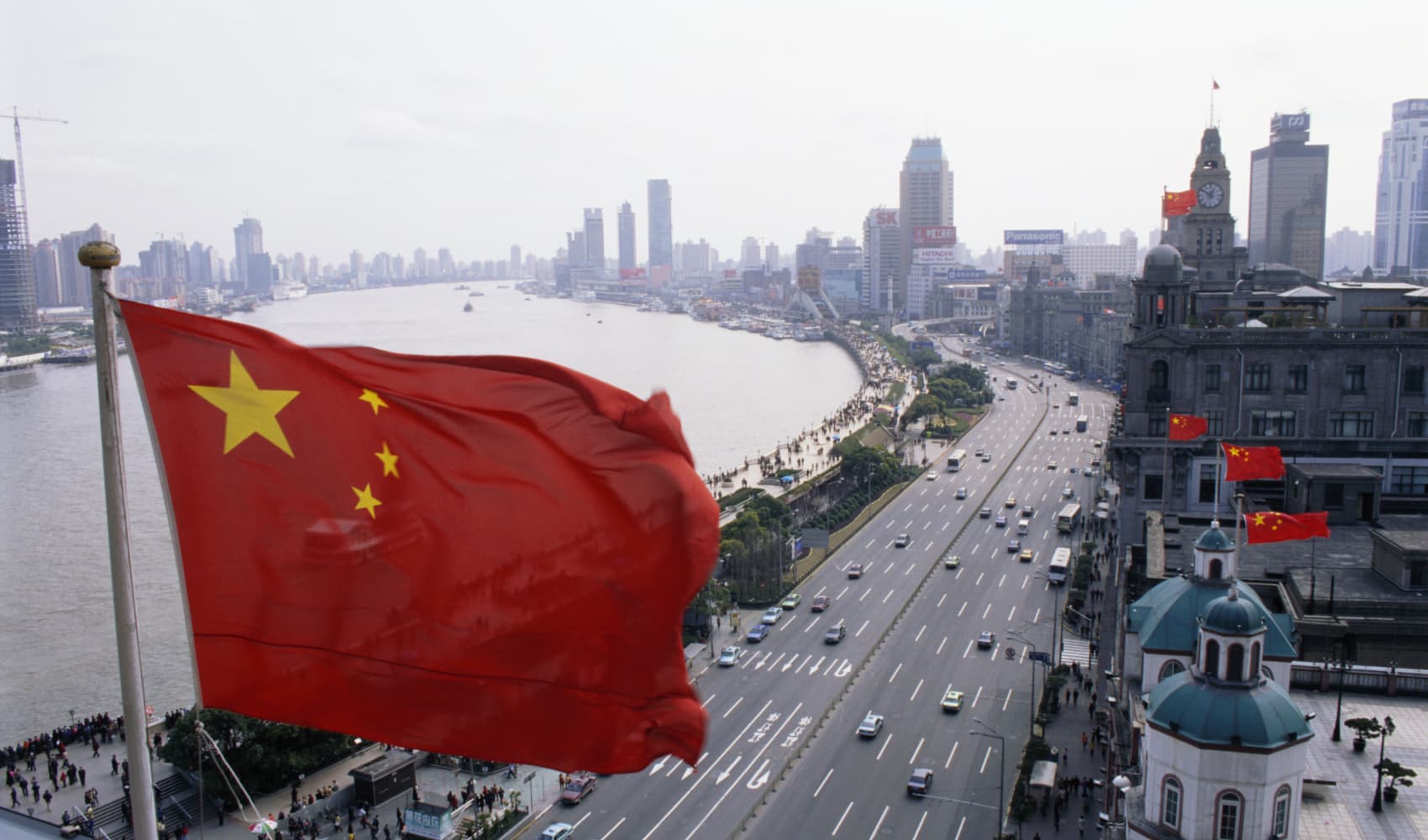Asia-Pacific Markets Mixed: China Rates Steady, Impacting You?
Asia-Pacific Markets: Navigating the Trade Winds of Uncertainty
Introduction: A Mixed Bag in Asia-Pacific Markets
The Asia-Pacific markets painted a mixed picture on Monday, a bit like a weather forecast calling for sunshine and showers. While some indices surged ahead, others stumbled, all against the backdrop of China's steady lending rates and persistent trade tensions with the United States. The key takeaway? Global events cast a long shadow over regional economies. Let's dive into the specifics and see what's shaping these market movements.
China's Steady Hand: Lending Rates Remain Unchanged
The People's Bank of China's Decision
The People's Bank of China (PBOC) decided to hold its key loan prime rates steady. This means the 1-year loan maturity rate remains at 3.10%, and the 5-year loan maturity rate stays at 3.60%. Was this a surprise? Not really. Economists polled by Reuters largely expected this move. The PBOC's decision reflects a cautious approach amidst concerns about the yuan's stability and ongoing trade frictions.
Impact on the CSI 300
Despite the unchanged rates, mainland China’s CSI 300 managed a modest gain, rising 0.33% to close at 3,784.88. Think of it as a small boat navigating choppy waters – steady, but not exactly smooth sailing. This minor increase indicates a degree of resilience in the Chinese market, but also hints at underlying uncertainties.
India's Bull Run: Nifty 50 and Sensex Soar
Indian Markets Shine
In stark contrast to some of its regional counterparts, India's stock market experienced a significant upswing. The Nifty 50 benchmark jumped by 1.32%, and the broader BSE Sensex climbed by 1.35% as of 1.25 p.m. Indian Standard Time. What's driving this surge? Perhaps it's a combination of positive domestic economic data and investor confidence.
Factors Fueling the Indian Rally
It's always good to ask the "why" behind the "what," isn't it? Several factors might be contributing to India's positive performance:
- Strong corporate earnings: Companies reporting better-than-expected profits can boost investor sentiment.
- Government reforms: Pro-growth policies can attract both domestic and foreign investment.
- Increased consumer spending: A rise in consumer demand often translates to higher corporate revenues.
Japan's Dip: Nikkei 225 and Topix Under Pressure
Japanese Markets Face Headwinds
Across the East China Sea, Japanese markets faced a different fate. The Nikkei 225 ended the day 1.30% lower at 34,279.92, while the broader Topix index declined 1.18% to 2,528.93. Why the downturn? It's likely a combination of factors, including global economic anxieties and profit-taking after a period of strong gains.
Understanding the Japanese Market Decline
A deeper look reveals potential reasons for the decline:
- Global economic uncertainty: Fears of a global recession or slower growth can weigh on export-oriented economies like Japan.
- Yen appreciation: A stronger yen can hurt Japanese exporters, making their products more expensive for foreign buyers.
- Profit-taking: After a sustained rally, investors may choose to cash in their gains, leading to a temporary dip in the market.
South Korea's Wobble: Kospi Up, Kosdaq Down
A Divided Performance in South Korea
South Korea's stock market presented a mixed picture. The Kospi index edged up 0.2% in choppy trade to close at 2,488.42, while the small-cap Kosdaq fell 0.32% to 715.45. This divergence suggests differing investor sentiment towards larger and smaller companies.
The Tale of Two Indices: Kospi vs. Kosdaq
Why the contrasting performance? Consider these points:
- Kospi: Dominated by large, established companies, often with global operations, offering more stability.
- Kosdaq: Comprised of smaller, growth-oriented companies, often more volatile and sensitive to market fluctuations.
Australia and Hong Kong: The Unfinished Story
The original report was truncated and left out market information for Australia and Hong Kong. To provide a complete picture, we need to consider potential factors influencing these markets.
Australia: Riding the Commodity Wave
Australia's economy is heavily reliant on commodities, so global demand for iron ore, coal, and other resources significantly impacts its stock market. Any news regarding China's economic activity or global demand for commodities can send ripples through the Australian market.
Hong Kong: Navigating Geopolitical Tensions
Hong Kong's market is particularly sensitive to geopolitical tensions, especially those involving China and the United States. Furthermore, any changes to regulations or policies impacting Hong Kong's status as a financial hub can have significant consequences for investor sentiment.
The Yuan's Pressure: A Currency Under Scrutiny
The yuan's value has been under pressure due to the ongoing trade tensions between Beijing and Washington. A weaker yuan can make Chinese exports more competitive, but it can also lead to capital outflows and instability in the financial system. The PBOC's monetary policy decisions are heavily influenced by the need to maintain a stable exchange rate.
Trade Tensions: The Unseen Hand
The shadow of trade tensions looms large over the Asia-Pacific region. These tensions create uncertainty, disrupt supply chains, and affect investor confidence. It's like a persistent cough, always there, making everyone a little uneasy.
Central Banks: Walking a Tightrope
Central banks across the Asia-Pacific region are walking a tightrope, trying to balance economic growth with financial stability. They need to manage inflation, support employment, and maintain stable exchange rates – all while navigating a complex global landscape.
Geopolitical Risks: A Constant Threat
Geopolitical risks are an ever-present concern in the Asia-Pacific region. From territorial disputes to political instability, these risks can quickly roil financial markets. Think of it as a game of Jenga – one wrong move, and the whole thing could come crashing down.
Global Economic Outlook: A Cloudy Horizon
The global economic outlook remains uncertain, with concerns about inflation, rising interest rates, and potential recessions in major economies. These factors can significantly impact the performance of Asia-Pacific markets, which are heavily reliant on global trade and investment.
Inflation: A Persistent Worry
Inflation remains a key concern for policymakers and investors alike. Rising prices can erode purchasing power, squeeze corporate profits, and force central banks to tighten monetary policy. This can create a challenging environment for economic growth.
Interest Rate Hikes: The Domino Effect
Central banks around the world have been raising interest rates to combat inflation. However, these rate hikes can also slow down economic growth and increase the risk of a recession. It's a delicate balancing act.
Future Outlook: Navigating the Uncertainty
What does the future hold for Asia-Pacific markets? The outlook remains uncertain, but one thing is clear: volatility is likely to persist. Investors need to be prepared for ups and downs, and they should focus on long-term strategies.
Investment Strategies: Weathering the Storm
In such a volatile environment, it's crucial to have a well-defined investment strategy. Diversification, risk management, and a long-term perspective are essential for weathering the storm. Consider these strategies:
- Diversification: Spreading your investments across different asset classes and geographies can help reduce risk.
- Risk Management: Understanding your risk tolerance and setting appropriate stop-loss orders can help protect your portfolio.
- Long-Term Perspective: Avoiding short-term speculation and focusing on long-term growth potential can lead to better outcomes.
Conclusion: Key Takeaways
Asia-Pacific markets traded mixed on Monday, reflecting a complex interplay of factors including China's steady lending rates, India's strong performance, Japan's decline, and South Korea's divided performance. Trade tensions, geopolitical risks, and the global economic outlook continue to cast a shadow over the region. Investors need to remain vigilant, diversify their portfolios, and adopt a long-term perspective to navigate these uncertain times. It's a constantly evolving story, so stay tuned!
Frequently Asked Questions
- Why did China's central bank keep lending rates unchanged?
The PBOC likely aimed to balance supporting economic growth with maintaining currency stability amid trade tensions. Changing rates could put additional pressure on the Yuan.
- What factors are contributing to India's positive market performance?
Strong corporate earnings, government reforms aimed at boosting economic growth, and increased consumer spending are likely driving the Indian market rally.
- Why are Japanese markets facing headwinds?
Global economic uncertainty, a strengthening yen (which hurts exporters), and profit-taking after previous gains are all contributing to the decline.
- What is the difference between the Kospi and Kosdaq indices in South Korea?
The Kospi is comprised of larger, more established companies, while the Kosdaq focuses on smaller, growth-oriented businesses, leading to different risk profiles and investor sentiment.
- How can investors navigate the volatility in Asia-Pacific markets?
Diversification across asset classes, careful risk management, and a long-term investment perspective are key strategies for weathering the storm and achieving sustainable returns.

